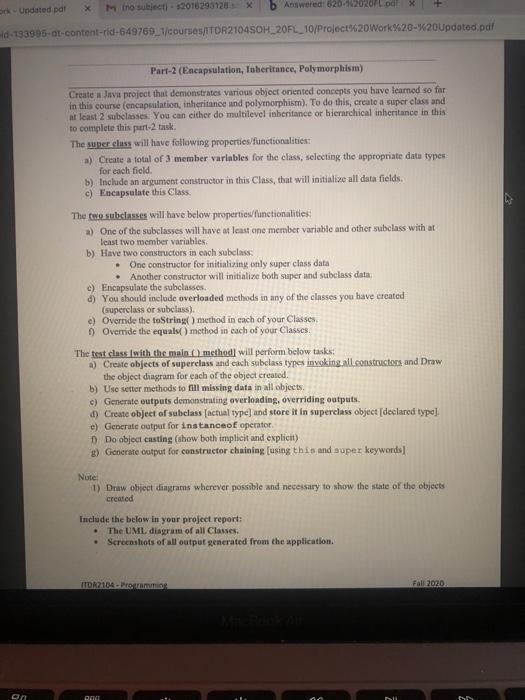Answered step by step
Verified Expert Solution
Question
1 Approved Answer
- Updated par Mino subiect - 52016293728X b Answered: 6201 2020L palX d-133995-or-content-rid-649769_1/courses/TTOR210450H_20FL_10/Project%20Work%20-%20Updated pdf Part-2 (Encapsulation, Inheritance, Polymorphism) Create a Java project that demonstrates various

Step by Step Solution
There are 3 Steps involved in it
Step: 1

Get Instant Access to Expert-Tailored Solutions
See step-by-step solutions with expert insights and AI powered tools for academic success
Step: 2

Step: 3

Ace Your Homework with AI
Get the answers you need in no time with our AI-driven, step-by-step assistance
Get Started


